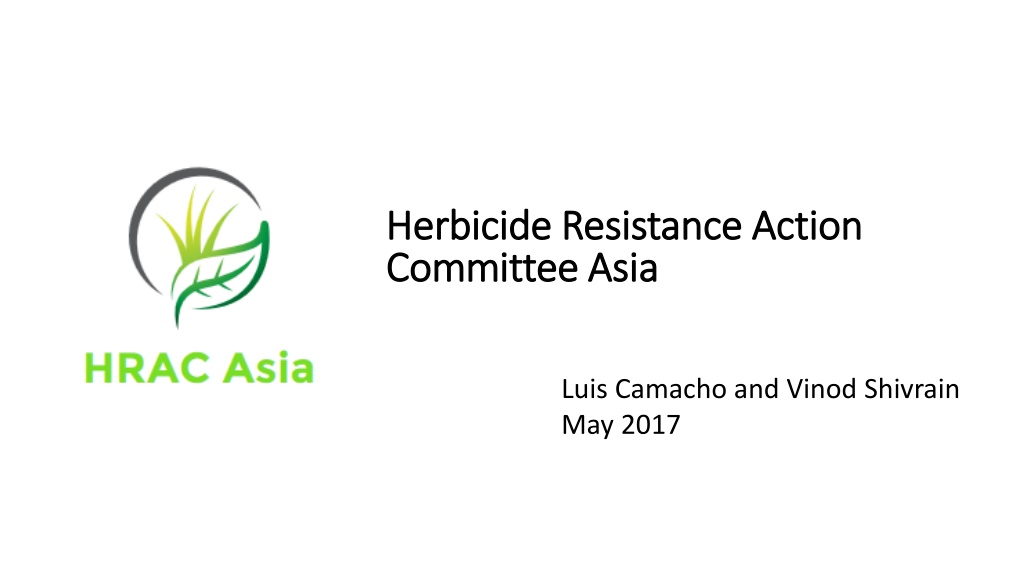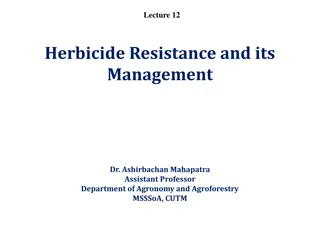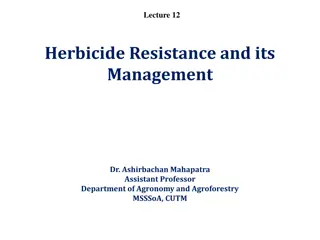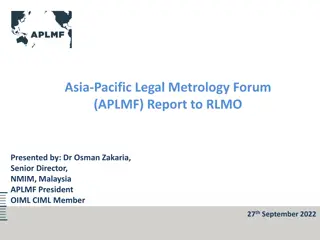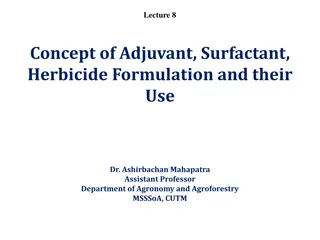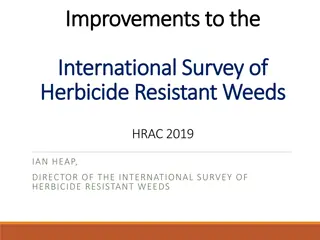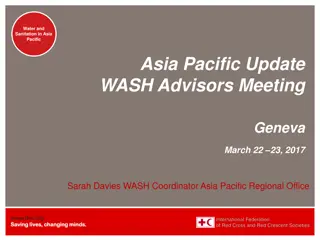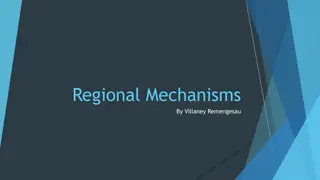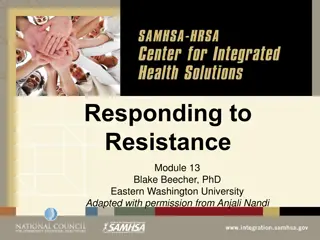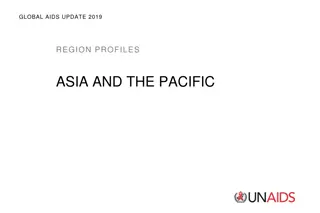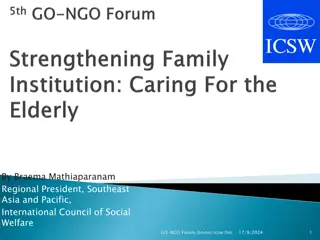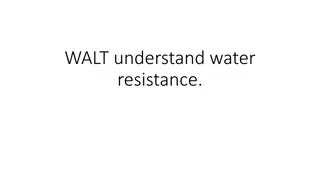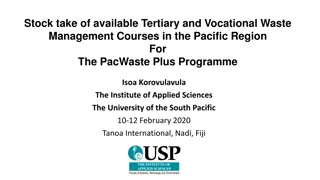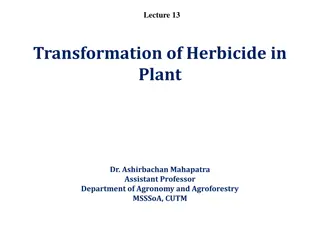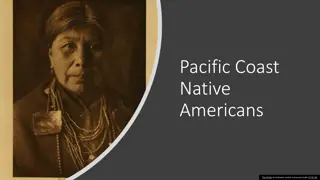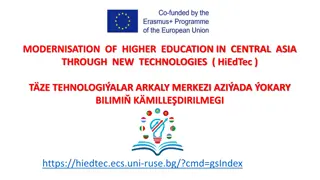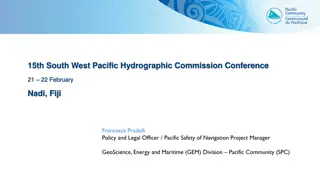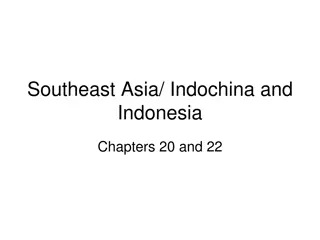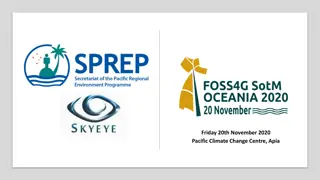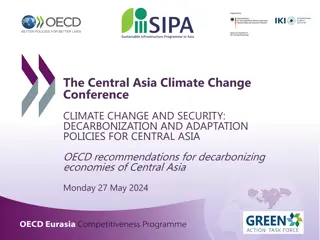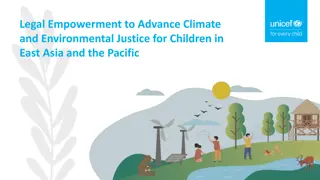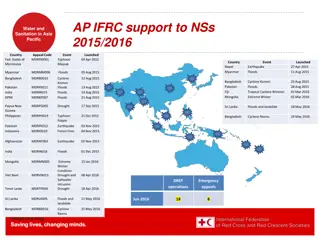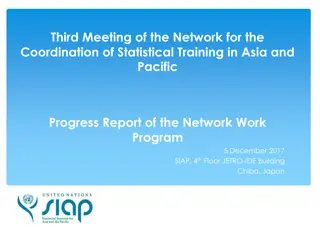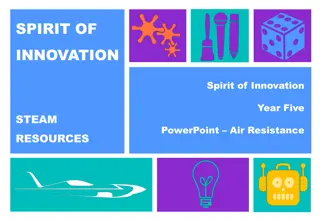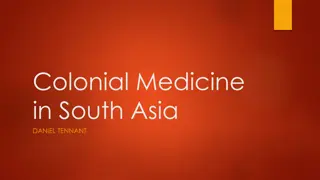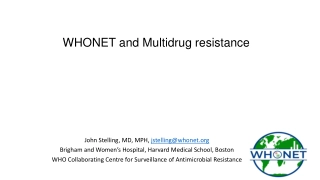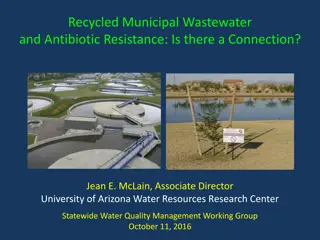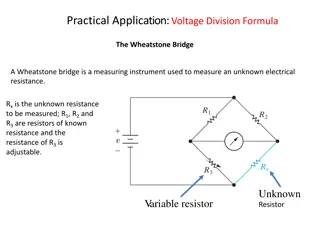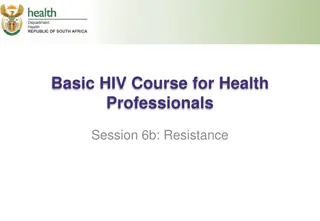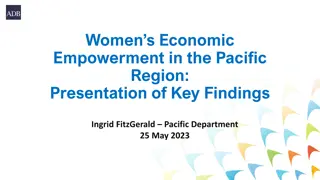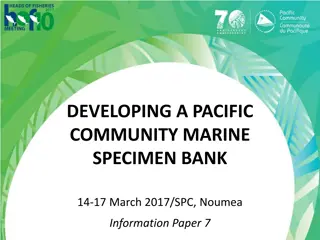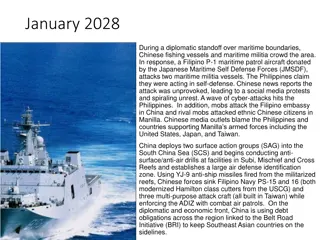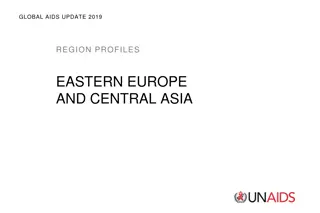Challenges and Trends in Herbicide Resistance Management in Asia-Pacific Region
The Asia-Pacific region faces challenges with herbicide resistance, particularly in countries like China and Australia. Issues include incorrect herbicide application, resistance cases reported, and concerns about glyphosate resistance. Additionally, the introduction of herbicide-tolerant traits in some countries has escalated demand for generic products. The region is actively addressing capacity building and the management of herbicide resistance to safeguard agricultural productivity.
Download Presentation

Please find below an Image/Link to download the presentation.
The content on the website is provided AS IS for your information and personal use only. It may not be sold, licensed, or shared on other websites without obtaining consent from the author. Download presentation by click this link. If you encounter any issues during the download, it is possible that the publisher has removed the file from their server.
E N D
Presentation Transcript
Herbicide Resistance Action Herbicide Resistance Action Committee Asia Committee Asia Luis Camacho and Vinod Shivrain May 2017
Asia Pacific China region at a glance Asia Pacific accounted for approximately 25% share of the global herbicides market. China is a major consumer of herbicides in Asia Pacific and is the fastest-growing country. Large number of very small customers operating with a high degree of relative risk applying incorrect doses, incorrect application timings and using illegal/counterfeit products in which the dose/efficacy is unknown. Confirmed cases of herbicide resistance reported. Absence of MoA labeling classification. There are some countries banning certain herbicides products. Challenging capacity building. Herbicide tolerant traits introduced in the Philippines and Vietnam and approved in Pakistan. Escalated use and demand for generic products China Korea Pakistan Taiwan India Vietnam Thailand Philippines Malaysia Singapore Indonesia
Herbicide Resistance cases in Asia http://weedscience.org
Glyphosate Resistance in Asia is not related to HT cropping systems, however raises concerns on over-reliance of glyphosate Country Australia Weed Species Lolium rigidum (rigid ryegrass) When declared Situation 1996* Canola, Cereals, Fencelines, Wheat, apples, around building, irrigation channel, alfalfa, clover, grapes, roadside railways and Pasture seed Cropland Sorghum and Wheat Cropland Fallow Cropland, Industrial sites, and Roadsides Fenceline and wheat Australia Australia Australia Australia Australia Echinocloa colona (jungle rice) Urochloa panicoides (liverseed grass) Chloris truncata (windmill grass) Raphanus raphanistrum (wild Radish) Conyza bonariensis (hairy fleabane) 2007* 2008* 2010* 2010* 2010 Australia Bromus diandrus (ripgut Brome) 2011* Australia Brachiaria eruciformis (sweet Summer Grass) 2014* Fallow Australia Bromus rubens (Red Brome) 2014* Fallow Australia Sonchus oleraceus (annual Sowthistle) 2014* Cotton and fallow Malaysia Malaysia China Eleusine Indica (goosegrass) Hedyotis verticillata (woody borreria) Conyza canadiensis (horseweed) Eleusine Indica (goosegrass) New zealand Lolium perenne(Perennial Ryegrass) 1997* 2005 2006 Orchards Oil palm plantation Orchards China 2010 2012 Cotton and Citrus Grapes Japan Lolium perenne ssp. multiflorum (Italian Ryegrass) Eleusine Indica (goosegrass) Conyza canadiensis (horseweed) 2011 Rice Paddy Levee Japan Japan 2013 2014 Rice Paddy Levee Railways
HRAC Asia Organization HRAC Asia is being formed with eight companies members (Australia and Japan have their own HRAC entities). It will consist of a regional coordinating group leading from Singapore (in concert with the guidance from Global HRAC) with few representatives located in other countries of the region.
HRAC Asia representatives Name Edson Begliomini BASF Company Status Confirmed Venay Sharma Bayer Brendan Ahem Dupont Pioneer Confirmed Oliver Paige Dow Fong Wen Shyaun Kumar Vankayala FMC Confirmed Sumitomo Confirmed Vino Shivrain Confirmed Syngenta Confirmed Luis Camacho Monsanto Crop Life Chairs: Sonny Tabata and Andrew Roberts
Mission Facilitate communication and education on herbicide resistance Promote the development and facilitate the implementation of herbicide resistance management strategies to preserve herbicides and herbicide tolerant traits for sustained use.
Objectives: Advocate the use of mode of action labelling, and where appropriate, the use of alternations or mixtures for resistance management, as well as combinations of technologies such as traits and pesticides Establish network and collaborate with regional experts for the identification and confirmation of herbicides resistance weed Promote best management practices: highlight the dangers of applying incorrect doses, incorrect application timings and using illegal/counterfeit products in which the dose/efficacy is unknown Support, implement and, if necessary sponsorresearch work to make progress in the understanding of resistance and how it can be managed or mitigated Promote public and private herbicide-resistant weed monitoring programs for early detection and to monitor the scope of the problem. Communicateherbicide resistance management strategies and support their implementation through technical recommendations.
Priorities Define regional governance to enable efficient and effective coordination of the network Leveraging partnership opportunities and utilize existing network capacity Asian Pacific Weed Science Society Weed Science Society of Republic of China (WSSROC, Taiwan) Identify key priorities in the region Develop strategy and rolling out plans Establish key performance indicators that are continuously monitored and measured
What support do we need from GHRAC? Foster awareness of the importance of HRAC in Asia and the impact in the countries: limited capabilities of company resources within each country in Asia - in terms of expertise and/or broad leadership of the issues Share learnings from other geographies operating in similar situation eg Europe Access to GHRAC capacity building material to promote best management practices Recommendations on how should we involve the generic industry in the implementation of best management initiatives
